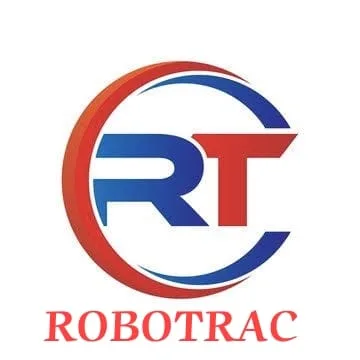Unleashing the Potential: Transforming Your Mini Tractor into a Framing Powerhouse
While the rise of robot tractors and AI-powered agricultural marvels like Replace with a relevant company selling smart tractors in your region
signals a future of high-tech farming, there’s still a place for the faithful mini tractor on smaller farms and framing operations. This mighty machine can be a true asset, but equipping it with the right tools and knowledge is crucial for maximizing its effectiveness. This comprehensive guide delves into how to transform your mini tractor into a framing powerhouse, tackling diverse tasks with ease.
Equipping for Efficiency: Essential Attachments for Your Mini Tractor
The key to unlocking your mini tractor’s full potential lies in strategic attachment selection. Here are some must-have attachments to tackle a wide range of framing jobs:
- Front-End Loader: Consider this your framing workhorse. A front-end loader allows you to scoop, load, and transport a variety of materials like dirt, gravel, mulch, and manure. Leveling ground, digging trenches for drainage or irrigation, and filling raised beds become effortless tasks with this attachment.
- Operational Tips:
- Ensure the loader’s weight capacity aligns with your mini tractor’s capabilities to prevent overloading and potential damage.
- Practice proper loading techniques to maintain stability and avoid tipping hazards. Utilize the loader’s full range of motion for precise material placement.
- Operational Tips:
- Post Hole Digger: Ditch the manual labor! A post hole digger attachment expedites the process of creating holes for fence posts, mailboxes, or even planting trees. This saves you time and effort, especially when working on large projects involving numerous holes.
- Operational Tips:
- Choose the appropriate auger size for the desired hole diameter.
- Mark the desired hole location clearly before engaging the auger to ensure precise placement.
- Maintain a level position while operating the auger for straight and consistent holes.
- Operational Tips:
- Tiller: Preparing seedbeds for planting or incorporating amendments like compost or manure becomes a breeze with a tiller attachment. This attachment breaks up compacted soil, creating a favorable environment for seed germination and plant growth.
- Operational Tips:
- Match the tiller size to your mini tractor’s horsepower to ensure efficient operation.
- Adjust the tilling depth based on your specific needs (deeper for new plantings, shallower for incorporating amendments).
- Till in multiple passes for heavily compacted soil, gradually breaking it down for optimal results.
- Operational Tips:
- Mower: Maintaining pastures, walkways, and field edges is a breeze with a mower attachment. Choose between a flail mower for rough terrain with its ability to handle tall grass, weeds, and even brush, or a finishing mower for a clean and manicured look on maintained areas.
- Operational Tips:
- Select the mower width that aligns with your mini tractor’s horsepower and the desired mowing coverage.
- Adjust the cutting height based on the desired outcome (shorter for pastures, taller for wildlife habitat).
- Mow regularly to maintain a healthy lawn and prevent weed growth.
- Operational Tips:
- Backhoe: For tackling demanding digging tasks beyond the capabilities of a front-end loader, consider a backhoe attachment. This attachment allows you to create ditches, drainage channels, or even small ponds, significantly enhancing the versatility of your mini tractor for framing projects.
- Operational Tips:
- Ensure your mini tractor has the necessary weight and horsepower to handle a backhoe attachment.
- Familiarize yourself with the backhoe’s controls and operating procedures for safe and efficient digging.
- Call utility companies before digging to avoid underground infrastructure.
- Operational Tips:

Maximizing Performance: Optimizing Your Mini Tractor for Framing (continued)
- Tire Selection: Consider replacing your standard tires with agricultural tires for improved performance in off-road framing conditions. These tires typically have deeper treads that provide better traction in loose soil, mud, or wet grass. This enhanced traction allows you to navigate uneven terrain with greater ease and confidence.
- Meticulous Maintenance: Regular maintenance is crucial for ensuring your mini tractor operates smoothly and efficiently for years to come. Follow the manufacturer’s recommendations for oil changes, filter replacements, and general upkeep. A well-maintained mini tractor is less prone to breakdowns, minimizing downtime and maximizing productivity during your framing projects.
- Maintenance Resources:
- Consult your mini tractor’s owner’s manual for specific maintenance schedules and procedures.
- Several online resources and video tutorials offer visual guides for common mini tractor maintenance tasks.
- Maintenance Resources:
- Safety First: Prioritize safety above all else when operating your mini tractor. Always use a roll-over protective structure (ROPS) and wear proper safety gear like gloves, boots, and eye protection to minimize the risk of accidents or injuries.
- Safety Resources:
- National Safety Council – Agriculture Safety Topics.
- Occupational Safety and Health Administration (OSHA) – Agricultural Safety Standards:
- Safety Resources:
- Matching Power and Tools: Ensure compatibility between your mini tractor and the attachments you choose. Overloading your tractor with attachments that exceed its horsepower or weight capacity can damage the engine, transmission, or axles. Consult your tractor’s manual or the attachment manufacturer’s specifications to determine compatibility.
- Mastering the Techniques: Invest time in learning proper operating procedures for both your mini tractor and its attachments. This includes understanding safe operating speeds, maneuvering techniques, and proper attachment usage for specific tasks. Mastering these techniques allows you to get the most out of your equipment while minimizing the risk of accidents or injuries.
- Learning Resources:
- Online tutorials and video demonstrations can provide visual guidance for operating mini tractors and attachments.
- Consider attending workshops or training sessions offered by local agricultural extension agencies or equipment dealerships.
- Learning Resources:
Beyond Mini Tractors: Specialized Equipment Considerations
While mini tractors can be incredibly versatile framing tools, it’s important to acknowledge that they might not be ideal for every task. Here’s a brief overview of specialized equipment considerations:
- Power Tillers: For smaller-scale tasks like preparing garden beds or tilling confined spaces, power tillers might be a more suitable option compared to a mini tractor. These compact machines offer excellent maneuverability and are well-suited for targeted soil cultivation.
- Seed Drills: For precise seed planting over larger areas, seed drills offer a significant advantage over manual seeding methods. These specialized machines ensure consistent seed depth and spacing, leading to improved germination rates and optimized crop yields. While mini tractors can be equipped with seed drill attachments, dedicated seed drills often provide greater precision and efficiency for large-scale planting projects.

The Future of Framing: Embracing Innovation While Utilizing Existing Tools
The agricultural landscape is constantly evolving, and the integration of smart agriculture technologies like those offered by [Replace with a relevant company selling smart tractors in your region] might be a future consideration for larger framing operations. However, the faithful mini tractor, when equipped with the right attachments and operated with knowledge and care, remains a powerful and versatile tool for smaller farms and framing projects. By understanding these optimization strategies and safety considerations, you can transform your mini tractor into a reliable and efficient partner for a long and successful framing future.

